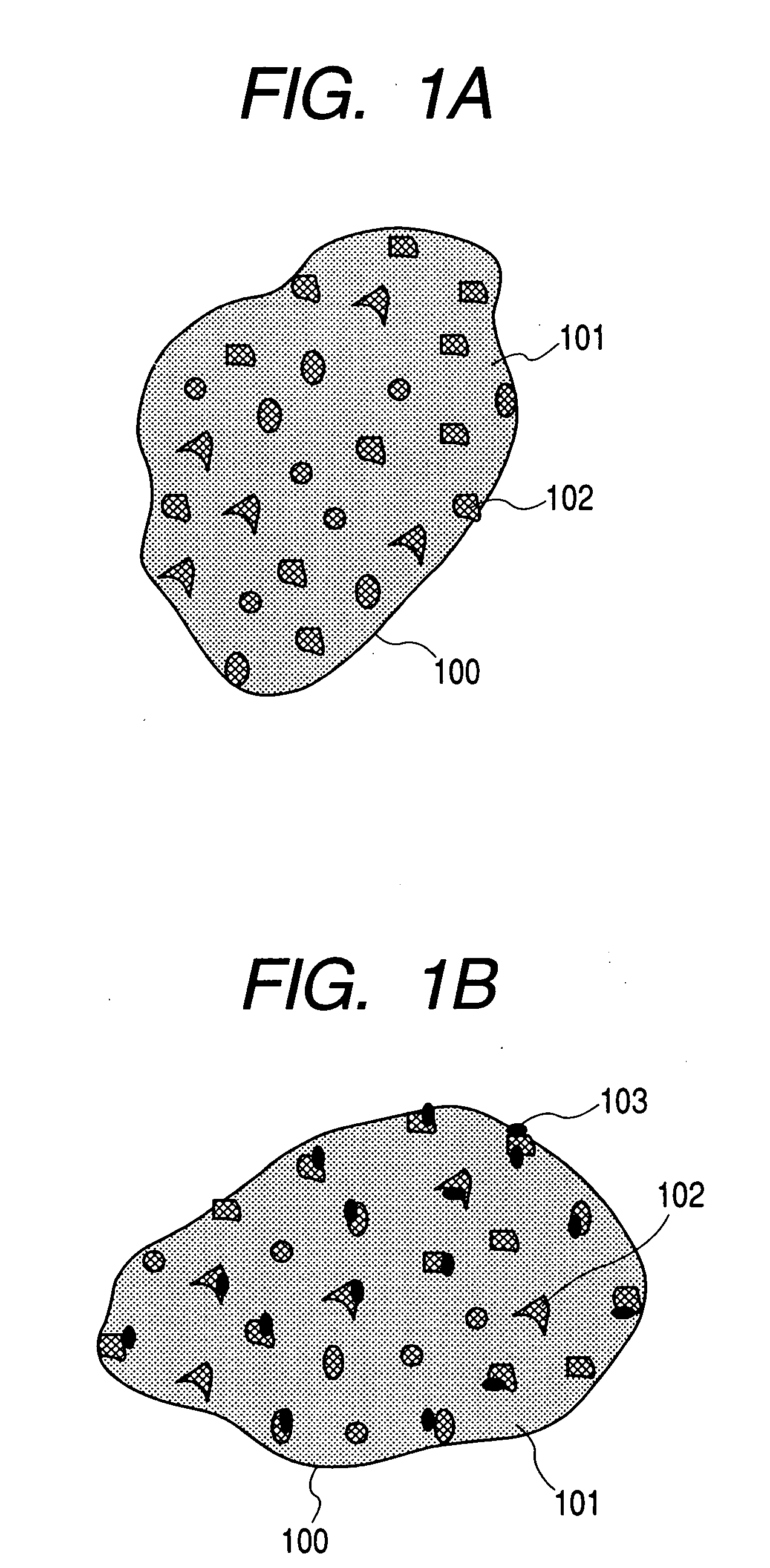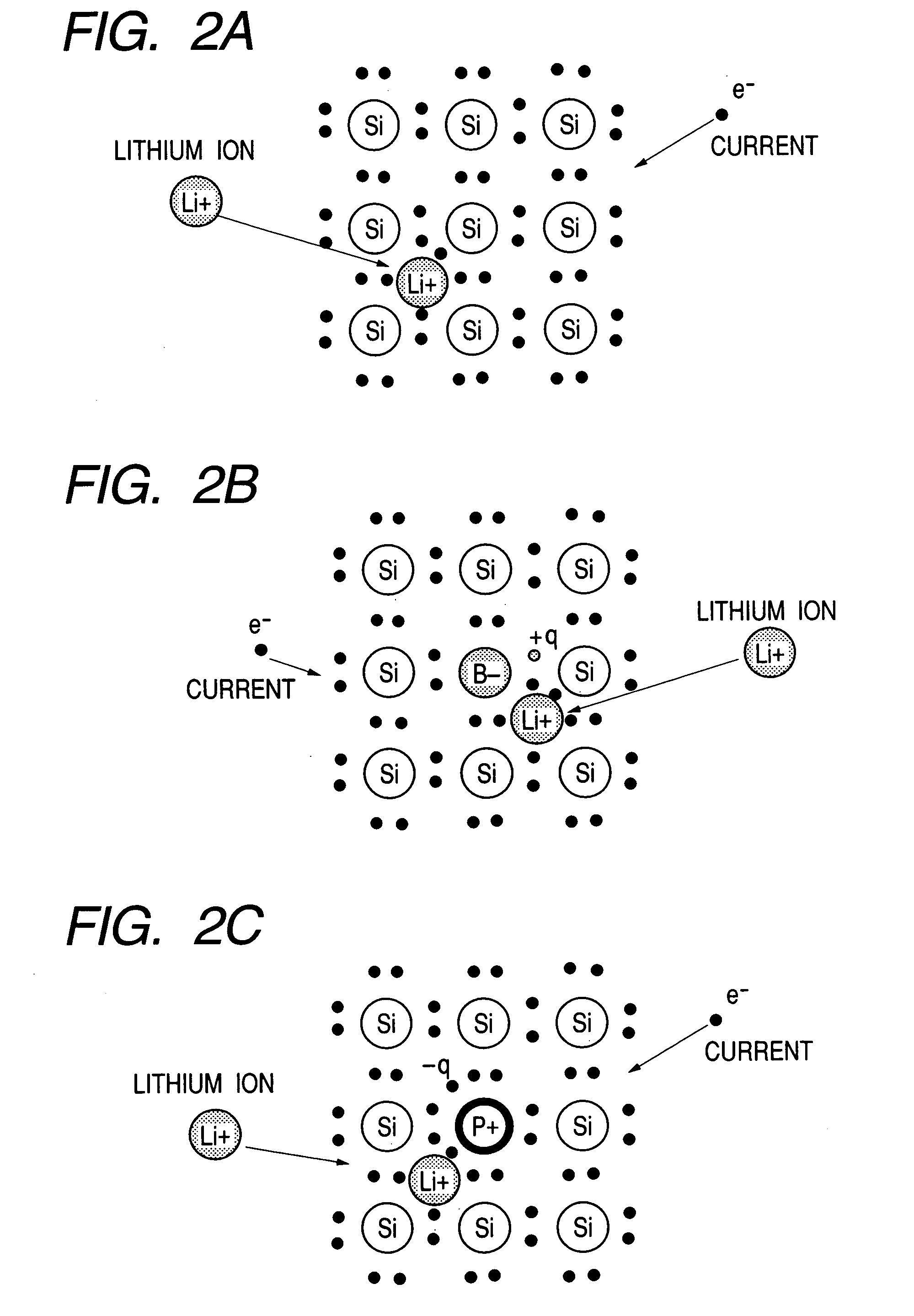Electrode material for lithium secondary battery and electrode structure having the electrode material
a lithium secondary battery and electrode material technology, applied in the direction of cell components, electrochemical generators, transportation and packaging, etc., can solve the problems of high energy density secondary batteries comparable with lithium primary batteries, electrode materials have not been realized, and the construction of such additional thermal power plants is difficult. , to achieve the effect of low cost, high electrical conductivity and low conductivity
- Summary
- Abstract
- Description
- Claims
- Application Information
AI Technical Summary
Benefits of technology
Problems solved by technology
Method used
Image
Examples
example 1
[0157] Grained silicon (purity 99.6%) was mixed with a lump of titanium in an atomic ratio of 85:15 (weight ratio of 76.8:23.2), then formed in a vacuum into an Si—Ti alloy using an arc welder. Next, the Si—Ti alloy was melted using a single roll method apparatus to form a molten metal, which was rapidly cooled by blowing at a revolving copper roll in argon gas to prepare an Si—Ti alloy. The Si—Ti alloy was then pulverized for 2 hours with a planetary-type ball mill using silicon nitride balls in an argon gas atmosphere to obtain a fine powder for an electrode material.
example 2
[0158] Grained silicon (purity 99.6%) was mixed with a lump of titanium and a lump of boron in an atomic ratio of 85:15:0.85 (weight ratio of 76.8:23.2:0.3), then formed in a vacuum into a boron doped Si—Ti alloy using an arc welder. Next, the boron doped Si—Ti alloy was melted using a single roll method apparatus to give a molten metal, which was rapidly cooled by blowing at a revolving copper roll in argon gas to prepare a boron doped Si—Ti alloy. The boron doped Si—Ti alloy was then pulverized for 2 hours with a planetary-type ball mill using silicon nitride balls in an argon gas atmosphere to obtain a fine powder for an electrode material.
example 3
[0159] Grained silicon (purity 99.6%) was mixed with a lump of titanium in an atomic ratio of 85:15 (weight ratio of 76.8:23.2), then formed in a vacuum into an Si—Ti alloy using an arc welder. Next, grained tin was added to the Si—Ti alloy to make an atomic ratio of Si:Sn:Ti=76.2:10.3:13.5 (weight ratio of 53.3:30.5:16.05), which was then melted using a single roll method apparatus to give a molten metal, and rapidly cooled by blowing at a revolving copper roll in argon gas to prepare an Si—Sn—Ti alloy. The Si—Sn—Ti alloy was then pulverized for 2 hours with a planetary-type ball mill using silicon nitride balls in an argon gas atmosphere to obtain a fine powder for an electrode material.
PUM
 Login to View More
Login to View More Abstract
Description
Claims
Application Information
 Login to View More
Login to View More - R&D
- Intellectual Property
- Life Sciences
- Materials
- Tech Scout
- Unparalleled Data Quality
- Higher Quality Content
- 60% Fewer Hallucinations
Browse by: Latest US Patents, China's latest patents, Technical Efficacy Thesaurus, Application Domain, Technology Topic, Popular Technical Reports.
© 2025 PatSnap. All rights reserved.Legal|Privacy policy|Modern Slavery Act Transparency Statement|Sitemap|About US| Contact US: help@patsnap.com



